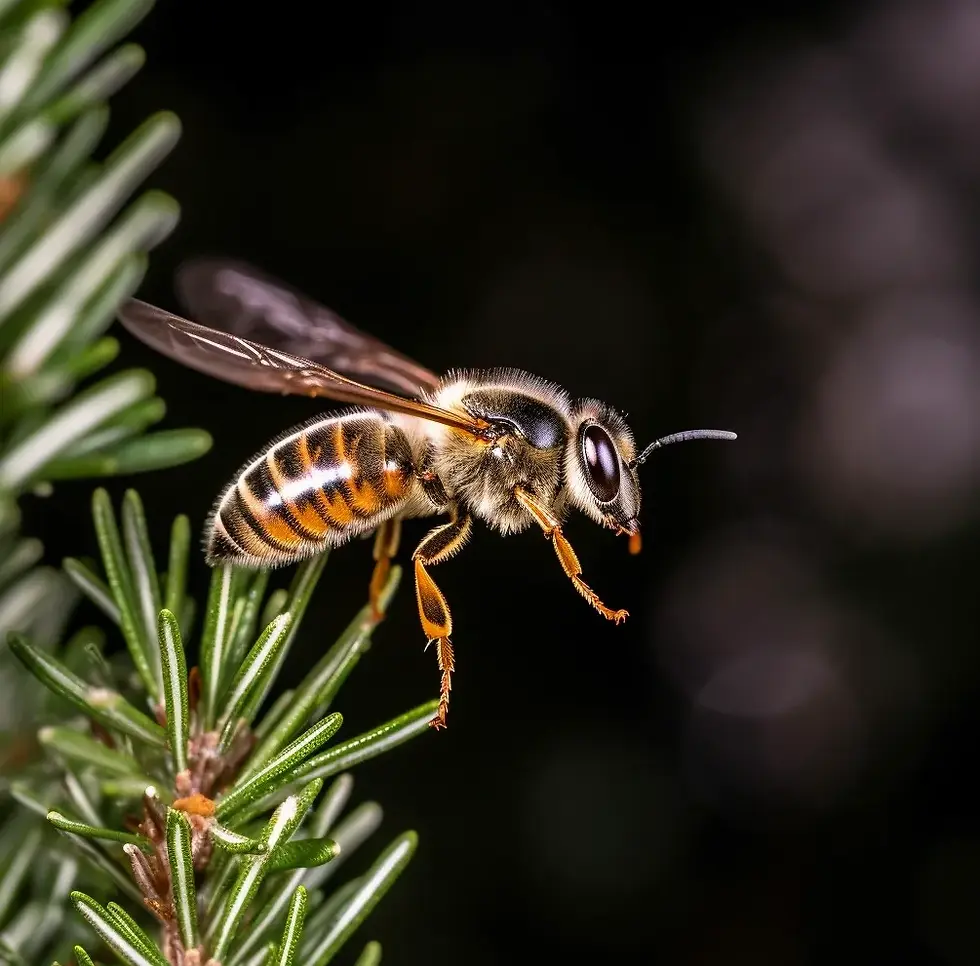Do Honey Bees Die When They Sting People?
- Pete Rizzo

- Dec 31, 2023
- 4 min read
Updated: May 5

Yes, honey bees die after they sting. Their barbed stinger remains in the skin, pulling out a portion of their abdomen when they attempt to escape, which is fatal. Note that most other bees and wasps have smooth stingers and can sting multiple times without dying.
A poignant truth lies beneath the honeybee's vibrant lives: the often fatal consequence of their sting. This article looks into the world of bees, unveiling the mystery of whether these essential pollinators pay the ultimate price for their defense.
We get sad when we get stung because we know the bee will die.
The Anatomy of a Bee Sting:
A bee's stinger is a marvel of nature's engineering. It's a complex apparatus, designed not just for defense but also as a means of communication within the hive.
When a bee stings, it's not just an act of aggression but a sacrificial move for the greater good of the colony. But what makes the stinger of a honeybee so unique?
Unlike their wasp or bumblebee cousins, honeybees have a barbed stinger that lodges in the skin of their target, ultimately leading to their demise.
The Life and Death of a Honey Bee After Stinging:
For a honeybee, stinging is a final act. When they sting, their barbed stinger becomes embedded in the skin of their target, and as the bee attempts to fly away, this results in the tearing of their abdomen, leading to their death.
This self-sacrificial act is a testament to the honeybee's commitment to its colony. In contrast, other bees and insects equipped with smooth stingers can sting multiple times without harming themselves.
Weirdly, they all don't have smooth stingers so no one has to pay the price for a sting.

The Role of Stinging in Bee Colonies:
In a bee colony, every action, including stinging, serves a purpose. The worker bees, those most likely to sting, are the protectors of their hive. Their stings and their powerful venom are a defense mechanism, a way to ward off predators and protect their queen and larvae.
The loss of a few worker bees is a small price to pay for the colony's survival, highlighting the communal nature of these incredible insects.
Human and Bee Interactions:
Encounters between humans and bees can sometimes lead to stings, often due to perceived threats by the bees. It's crucial to understand how to coexist peacefully with these creatures.
Avoid sudden movements, do not disturb their hives, and know the sad truth that they die after stinging. We don't want the bees to have to resort to that for any reason.
Remember, bees are not out to harm us; they sting only as a last resort.
Recognizing and Avoiding Bee Stings:
Identifying Bees: Learn to differentiate between honeybees, bumblebees, and wasps, as their behavior and potential threat levels vary.
Signs of Potential Bee Aggression: Watch for loud buzzing, erratic flying, or raised abdomens, indicating a defensive posture.
Tips for Avoiding Bee Stings: Wear long sleeves and pants, avoid bright colors and floral prints, use insect repellent, and stay calm if a bee lands on you.
Additional Precautions: If you are allergic to bee stings, carry an EpiPen and know how to use it.
Conservation Efforts and the Plight of Bees:
Today, bees face numerous challenges, from habitat loss to pesticides, which threaten their survival. The decline in bee populations is a grave concern, not just for the natural world but for human agriculture as well.
By supporting conservation efforts and adopting bee-friendly practices, we can help ensure that these vital pollinators continue to thrive.
In the End
In nature, the honeybee's sting stands out as a poignant symbol of sacrifice and survival. As we've explored, the sting of a honeybee is both its defense and its demise.
Their willingness to give their life for the colony's safety is a powerful reminder of the interconnectedness of all living things. Let us protect the remarkable bees, for their fate and ours are deeply intertwined.
Betsy and Pete
Las Vegas, Nevada
About Us: The Authors

We're Betsy and Pete, passionate Las Vegas beekeepers trained by a master in the field. With hundreds of successful bee and bee swarm removals under our belts, we're not just experts; we're enthusiasts committed to the well-being of these incredible pollinators.
We manage dozens of beehives, both natural and honey-bearing at our Joshua Tree Preserve.
Our Commitment to Excellence
Education is an ongoing journey, especially in a dynamic field such as beekeeping. That's why we continually update our knowledge base, collaborate with other experts, and stay up to date with the latest advancements in bee control methods and beekeeping practices.
We also provide top-tier beekeeping supplies, offering everything a beekeeper needs, from beginners to experts.
.png)


